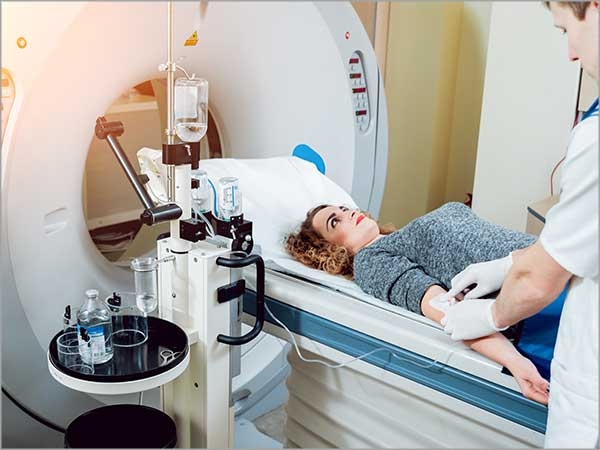Treatment Process for Radiation Therapy
Radiation oncology is a branch of medicine that treats cancer using ionizing radiation, like X-rays and particle therapy (electrons and protons). The ionizing radiation is generated by special devices like linear accelerator, tomotherapy etc. Recent advances have revolutionized the field of Radiation Oncology. Current technology allows radiation devices to precisely focus the radiation beam on tumour cells while avoiding normal cells. This has resulted in a significant reduction in adverse events.
Know the process of Radiation therapy
A number of techniques are there in radiation therapy and it is decided based on the size, type, location of cancer cells and logistics. The choice of technique for your treatment will be made after discussion with your oncologist. Typically, radiation is given for five days a week for 5 to 7 weeks and each session lasts for about 5 to 20 minutes (depending on the machine and technique).
Planning for Radiation Therapy
Treatment Mask and Treatment Simulation
Before starting treatment, the patient is taken to the hospital mould room to make a mask. The mask is made of a special type of plastic mesh, it is also called a cast or mould. The mesh completely covers the part of body to be irradiated. The mould keeps the body in position throughout the treatment.
The mould-making procedure takes around 20 to 30 minutes. The cast is a sheet of plastic which becomes soft when it is warmed and gets hard when it is cooled. The warm plastic is draped over the face and it is shaped to fit the face and head(or the part of the body to be irradiated). The plastic has small holes so that the patient can breathe. When the draped plastic cools down, it gives an exact impression of the face and the head.
Once the mask is done the patient is subjected to imaging test like CT scan to accurately localise the area to be treated. A dye is injected into the vein which helps the doctor to inspect the area more clearly. After the scanning process, the patient can go home.
The treatment team imports the images of the CT scan and feeds into a special computer called a treatment planning system (TPS). Then begins the concept of CONTOURING in which the Radiation Oncologist uses the imaging information to determine
- The exact shape of the tumour,
- Important structures near the tumour (For instance. eyes, spinal cord)
- Radiation dose to the tumour and normal tissue
The treatment is planned in such a way that tumour cells receive maximum radiation while surrounding normal tissues receive the least possible radiation dose.
Treatment Delivery
On the day of treatment, the patient is asked to lie on a table wearing comfortable clothing. The radiation technologist fits the mould and attaches it to the table and precisely position the patient.

After setting the patient all the personnel leave the room. The staff observe the patient on a TV screen and hear through an intercom so that the patient can call them if necessary.
The radiation technologists take the pictures of the tumour and compare them with the planning CT scan. The couch is adjusted if there is any variation in the patient’s position and the machine is turned on to provide the actual treatment. During the treatment, the machine may produce a buzzing sound. The patient must lie still until the completion of treatment. Radiation delivered cannot be seen or felt and it is a painless process.













